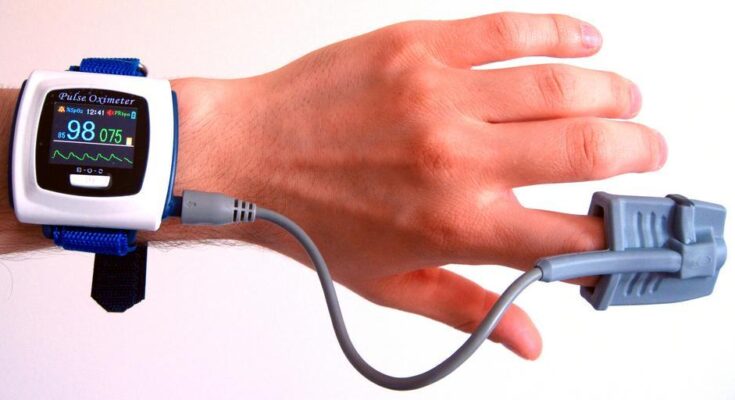Ever found yourself in a whirlwind of questions about your body’s rhythm? Questions like, “Why does my heart rate spike when I’m stressed?” or “Is my pulse rate normal after that jog around the park?” It can feel like you’re deciphering Morse code without a key. But what if I told you we could crack this together?
You see, understanding the mechanics of our hearts is more than just a medical puzzle—it’s unlocking knowledge to better health and wellbeing. And yes, it begins with learning the difference between heart rate and pulse rate.
end of this read, you’ll not only understand these rates but also their effect on everything from your workout routines to how well you sleep. You’ll also discover how different elements – such as room temperature and your physical fitness – can sway them! Let’s dive in and explore the depths of this subject!
Table of Contents:
- Influence of Body Mass and Fitness Level
- Impact of Health Conditions
- Resting Heart Rate and Pulse Rate
- A Healthy Range: Not One Size Fits All
- The Why Behind The Beats
- Target Heart Rate and Pulse Rate During Exercise
- Why Monitor Your Target Heart Rate?
- Determining Your Maximum Heart Rate
- Pulse Tracking: Hand-in-Hand with Monitoring Your Heart Rates
- Importance of Monitoring Heart Rate and Pulse Rate
- Paying Attention Pays Off: Unusual Patterns Matter.
- FAQs in Relation to Difference Between Heart Rate and Pulse Rate
- Are heart rate and pulse rate the same?
- What should your pulse rate be?
- What is normal pulse rate by age?
- What causes high pulse rate while resting?
- Conclusion
Understanding Heart Rate and Pulse Rate
Your heart, that hard-working muscle in your chest, beats to its own rhythm. Do you comprehend the contrast between heart rate and pulse rate? While they may sound similar, these two terms refer to different things.
Heart rate, simply put, is the number of times your heart beats in a minute. The average adult has a resting heart rate between 60 and 100 beats per minute (Cleveland Clinic). Factors like stress levels or how much coffee you’ve drunk can cause it to speed up or slow down.
On the other hand, pulse rate isn’t just about counting those thumps-thumps. It’s feeling each heartbeat as blood gets pushed through your arteries.
The place where this throbbing sensation can be felt best is known as the radial artery – right on your wrist. Go ahead: press gently with two fingers at this spot. What you feel is called a pulse – it’s quite literally life under skin.
If all this talk about hearts makes yours skip a beat (pun intended.), remember we’re not diagnosing any health problems here – leave that for healthcare professionals.
Pulse vs Heartbeat: The Main Difference?
A major distinction lies in what each one represents. Your heart pumping blood around equals your heartbeat creates arterial blood flow pulse (yes…that was mouthful.). Basically every time our dear old ticker contracts; it sends waves of pressure along our arteries which create pulses.
You might think both should always match up perfectly but hold onto that thought. Certain medical conditions or even holding your breath can create a difference between the two. In such cases, some heartbeats might not produce noticeable pulses and vice versa.
So there you have it: Heart rate is about beats per minute while pulse rate involves feeling those very beats. Both give us crucial insights into our heart health.
The Beat Goes On…
Understanding these concepts better is key to keeping your heart healthy. If you’re just curious or have specific health concerns, don’t forget. Before altering your lifestyle, it is essential to seek advice from a healthcare professional.
Key Takeaway:
there can be discrepancies between the two, especially in certain health conditions. It’s important to understand both rates and their differences because they provide vital information about our heart’s overall health.
Measuring Heart Rate and Pulse Rate
Your heart rate, or the number of times your heart beats in a minute, can be measured in various ways. One straightforward method is to count your own heartbeat. You can feel for this at different places on the body such as the neck or wrist where arteries are close to the skin surface.
Counting Heartbeats
Locate either your radial artery on the wrist or carotid artery in the neck for counting heartbeats. Once found, apply light pressure with two fingers – not too hard though. We don’t want to stop that vital blood flow pulse. Start counting for 60 seconds using a watch or clock.
This manual count gives you an estimate of how many times per minute your heart contracts. It’s simple but surprisingly effective if done correctly. Yet it might be challenging when engaging in activities like exercise when rates increase dramatically.
Tracking Heart Rates with Devices
If self-count seems tricky especially during vigorous physical activity, there are devices designed specifically to help track both heart rate and pulse more effectively.
A good option could include wearable tech like fitness trackers which measure real-time changes through sensors placed against our skin. These gadgets use photoplethysmography technology: emitting light into our tissues then measuring variations in reflected back light caused by arterial blood flow pulses—cool right?
This NIH study presents fascinating insights about correlations between body temperature changes and altered heartrate due exercise—a must-read for those interested.
Note:You should always consult a healthcare provider before starting any new health monitoring routine especially if you have underlying medical conditions that could affect your heart health.
So, whether you’re an athlete tracking your performance or just someone keen on maintaining good heart health, understanding how to measure both the rate and pulse of your heartbeat is a crucial skill. Remember: knowledge is power—especially when it comes to our bodies.
Key Takeaway:
Knowing your heart rate, the number of times your heart beats per minute, is a key health indicator. You can measure it manually by counting pulses at your wrist or neck for 60 seconds. If that’s tricky during activities like exercise, tech gadgets using photoplethysmography technology can help. But always ask healthcare advice before starting any new health routine.
Factors Affecting Heart Rate and Pulse Rate
Your heart rate is not just a simple number. The air temperature around you as well as your body mass and fitness level all contribute to influencing heart rate and pulse.
Influence of Body Mass and Fitness Level
The size of your body can impact both heart rates and pulse. The more mass your body has, the harder your heart must work to pump blood throughout it. This may result in higher heart rates for those with larger bodies.
Fitness level also plays a significant role here. According to research findings from the Copenhagen Heart Study, individuals who exercise regularly often have lower resting heart rates because their hearts are conditioned to pump blood more efficiently.
Impact of Health Conditions
A host of health conditions can affect our now-active body’s heartbeat as well. High BP can put a strain on the heart, potentially causing an elevated pulse rate or flutters.
Mental stressors also play a part – they activate adrenaline release, causing an increased cardiac output leading potentially towards tachycardia (higher-than-normal) or bradycardia (lower-than-normal).
You might think that these factors solely relate only directly affecting how many times the heart beats per minute, but there’s another side – pulses. That radial artery in the wrist feels? That pulsation isn’t random; rather, it represents arterial blood flow pulse created each time the heart relaxes after contracting, pumping out oxygen-rich lifeblood through every nook and cranny within us.
To ensure good health, heart rate monitoring should become routine. Ask your healthcare provider how often one should check, particularly if you have a medical condition. So remember – factors affecting heart rate and pulse are numerous; from the fitness level to health conditions like high blood pressure, all playing a role in this intricate dance of life.
Key Takeaway:
Your heart rate and pulse aren’t just numbers, they’re affected by your body mass, fitness level, health conditions and even the environment around you. Higher body mass means harder-working hearts while regular exercise can lead to lower resting rates. Health issues like high blood pressure or stress could also cause fluctuations in these vital signs. Monitoring them regularly is key for maintaining good health.
Resting Heart Rate and Pulse Rate
Your resting heart rate can give you insight into your wellbeing. For adults, the average resting heart rate typically falls between 60 and 100 beats per minute. However, many factors like age, fitness level, or even sleep duration can influence this number.
Speaking of sleep – did you know that how long you snooze each night could affect your heartbeat? Yep. Optimal rates have been observed for those clocking in around seven hours of dream time according to the Cleveland Clinic.
Moving on to pulse now – what’s up with that? Well, it’s not too different from heart rate but still holds its own importance. You see; while your heart rate reflects the number of times your ticker beats per minute (remember our earlier stat?), pulse represents these very beat sensations felt at various spots on your body like wrist or neck where arteries are close to skin surface.
Pulse is essentially arterial blood flow made perceptible by pressure changes as the heart contracts and relaxes – sending waves through arterial system which create rhythmic thumping sensation we identify as ‘pulse’. If ever there was a better representation of life coursing through us.
So both pulse and expected resting heart contribute towards getting an accurate picture of one’s cardiovascular well-being. But remember: always consult healthcare professionals before drawing any conclusions about symptoms such as irregular heartbeat or if unexpected restlessness persists beyond normal levels during non-active periods.
A Healthy Range: Not One Size Fits All
An interesting fact about our hearts is they don’t all tick-tock at same pace. Resting rates vary among individuals based on factors like fitness levels, age and health conditions. You may have heard of athletes having lower resting heart rates – it’s because their hearts are super efficient.
On the other hand, high blood pressure or stress could cause your ticker to speed up its beat. In such cases, always reach out to a healthcare provider for advice.
The Why Behind The Beats
So, you might be wondering: what’s the big deal? Well, knowing your normal resting heart rate range can actually act like a sneak peek into potential health issues. It gives us a chance to catch and address them before they turn serious.
Key Takeaway:
Understanding your cardiovascular health is tied to both your resting heart rate and pulse. The average adult’s resting heart rate typically falls between 60 to 100 beats per minute, though this can be affected by elements such as age, fitness level, and the amount of sleep you get. Your pulse represents these beats in specific areas of your body – it’s a rhythmic thump that shows blood flowing through your arteries.
Target Heart Rate and Pulse Rate During Exercise
Y’r ticker’s a muscle, and similar to any other muscle in your bod, it necessitates some work-out. To ensure you’re not over- or under-exerting, it’s important to understand your target heart rate. That’s where understanding your target heart rate comes into play.
The Cleveland Clinic explains that the target heart rate during exercise is a sweet spot of sorts – an ideal range based on age and fitness level where your ticker gets a good workout without straining. It’s typically 50 to 85% of an individual’s maximum heart rate.
Why Monitor Your Target Heart Rate?
Focusing on your target heart rates during workouts lets you gauge intensity levels effectively. If your pulse climbs above this zone, slow down. You might be overdoing it which can lead to excessive strain on the heart muscles over time.
In contrast, if it remains below this threshold even when you’re exercising hard… well buddy, it’s time to kick things up a notch.
Determining Your Maximum Heart Rate
An essential factor here is determining what exactly is YOUR maximum-heart individual’s age fitness level-based peak number for beats per minute (bpm). A widely accepted way to estimate this is by subtracting one’s age from 220 (though we’d recommend consulting with healthcare professionals for precise measures).
Pulse Tracking: Hand-in-Hand with Monitoring Your Heart Rates
Pulse tracking goes hand-in-hand with monitoring those crucial heartbeat numbers as they represent each throb felt through blood vessels walls due to pumping action of the now-active body while working out. Your pulse rate can give you real-time feedback about your heart’s activity during exercise, helping you stay within the target range.
So get out there and make every heartbeat count. Just remember to listen to what your heart (rate) is telling you – it could be the key to optimizing those workouts for a healthier, happier life.
Key Takeaway:
Keeping your heart muscle fit is crucial, and knowing your target heart rate can be a game changer. Hitting that perfect range of 50 to 85% of your maximum heart rate ensures you’re working out at the right intensity without overdoing it. If you find yourself going beyond or not quite reaching this zone during exercise, don’t sweat it. Just tweak your routine accordingly. Plus, monitoring pulse rates offers instant feedback on how well you’re nailing that goal.
Importance of Monitoring Heart Rate and Pulse Rate
Maintaining your heart health is critical for optimal wellness. Regularly monitoring both your heart rate and pulse rate can provide essential insights into this key aspect of your health.
A typical resting heart rate for adults who are healthy is between 60 and 100 bpm. But when the rates are either too high (tachycardia) or too low (bradycardia), it may indicate underlying health problems. You see, a higher heart rate doesn’t always signify better fitness—sometimes, it could hint at medical conditions such as high blood pressure or even heart palpitations.
Your pulse tells its own tale—it’s not just an echo of your heartbeat but also a measure of how efficiently that beat is translated into arterial blood flow throughout the body. Feeling each heartbeat via pulses on points like the radial artery in our wrist lets us gauge if our ticker’s rhythm stays steady or skips irregularly—a possible sign something might be amiss.
The good news? It’s easy enough to monitor these vital signs yourself. Tools ranging from smartwatches to simple fingers-on-wrist techniques make keeping tabs on average heart rates achievable for anyone interested in their cardiac welfare.
Paying Attention Pays Off: Unusual Patterns Matter.
You don’t need to be a healthcare professional nor require fancy devices—you’re capable hands armed with attention alone often suffice. Remembering what feels normal for you aids in detecting shifts earlier, which might help catch potential issues before they escalate.
If you notice unusual patterns—such as consistent rapid pulse despite being rested—or have concerns about variations related to factors including age or physical activity level, reach out immediately to a healthcare provider. The sooner potential anomalies get spotted, the sooner you can start addressing them.
According to Cleveland Clinic, regular monitoring helps identify potential health risks and also assists in tailoring exercise regimens. So why wait? Start checking your heart rates today for a healthier tomorrow.
Key Takeaway:
Understanding your overall health involves keeping a close eye on your heart rate and pulse. It’s crucial to regularly check these rates because they can reveal underlying issues such as high blood pressure or irregular heartbeat patterns. You don’t need to be a healthcare professional, just pay attention to what feels normal for you. Simple tools can give valuable insights, helping spot potential problems early on. So why wait? Start monitoring today and take the first step towards better heart health.
FAQs in Relation to Difference Between Heart Rate and Pulse Rate
Are heart rate and pulse rate the same?
No, they’re not. Heart rate measures how many times your ticker beats per minute while pulse rate counts these beats in different parts of your body.
What should your pulse rate be?
Your resting pulse should typically range from 60 to 100 beats per minute. But fitness levels, age, and overall health can shift this norm.
What is normal pulse rate by age?
Pulse rates differ with age: infants have a higher count (70-190 bpm), toddlers’ are around 80-120 bpm; for adults it’s usually between 60-100 bpm.
What causes high pulse rate while resting?
Above-normal restful pulses may signal stress or anxiety, dehydration, certain meds or substances like caffeine. Serious conditions such as anemia or hyperthyroidism might also cause it.
Conclusion
Understanding the difference between heart rate and pulse rate is more than just scientific trivia. It’s a key to unlocking better health and wellbeing.
You’ve learned how to measure these rates, both manually and with devices. Remember that feeling your pulse on your wrist or neck can give you insight into each heartbeat!
We dived into factors affecting heart rates, from body mass to room temperature. Now, it’ll be easier for you to track changes during exercise or rest periods.
The takeaway? Regular monitoring of these vital signs is essential for maintaining good heart health. So go ahead—take control of your well-being today!



